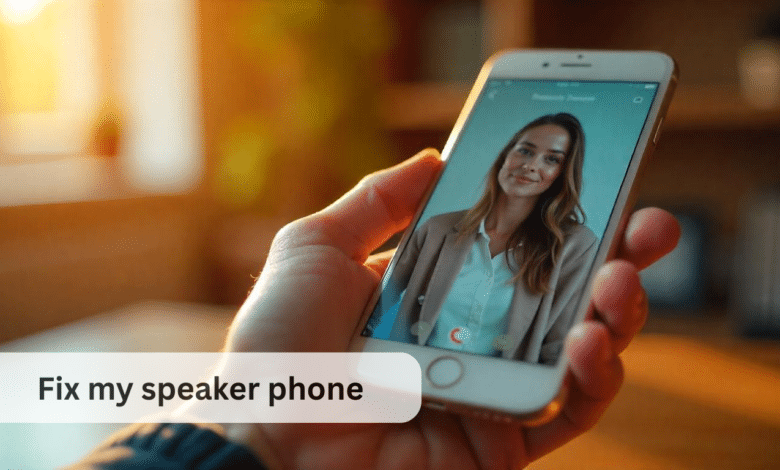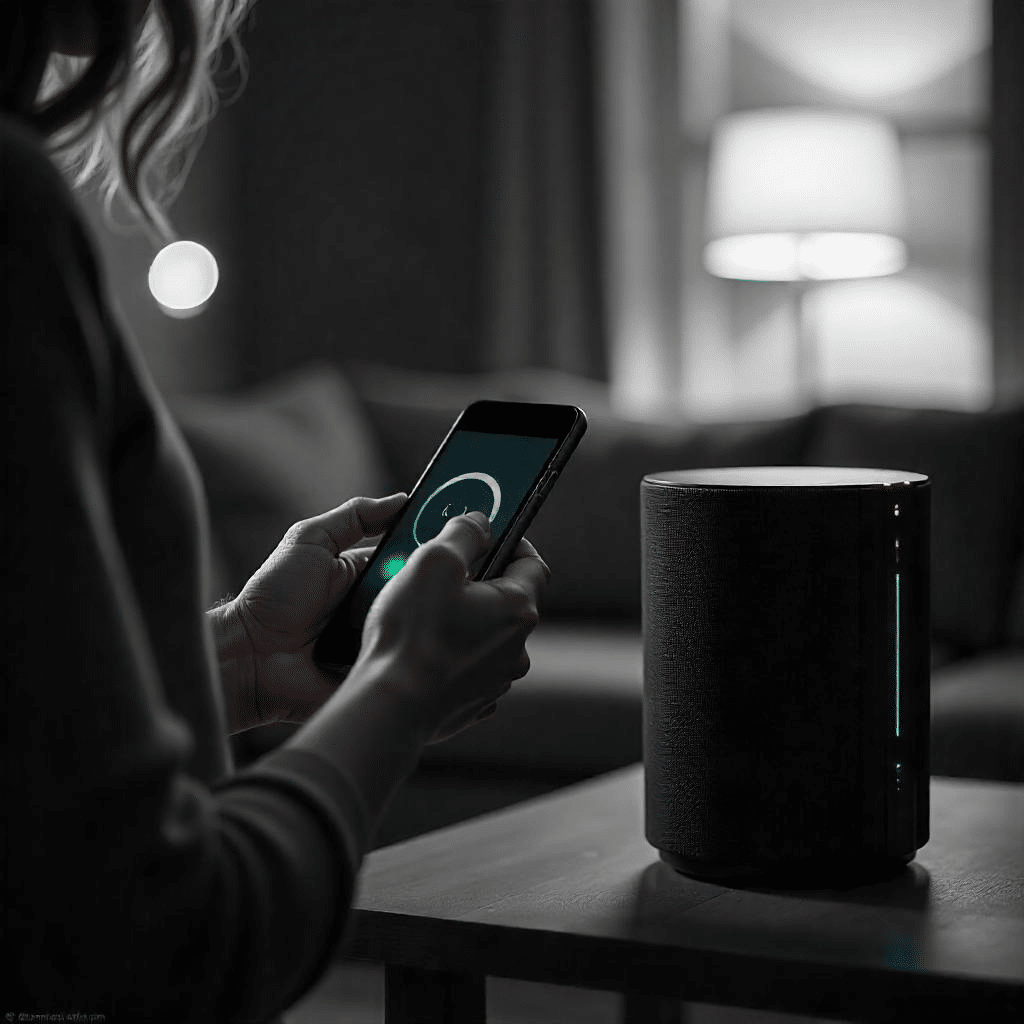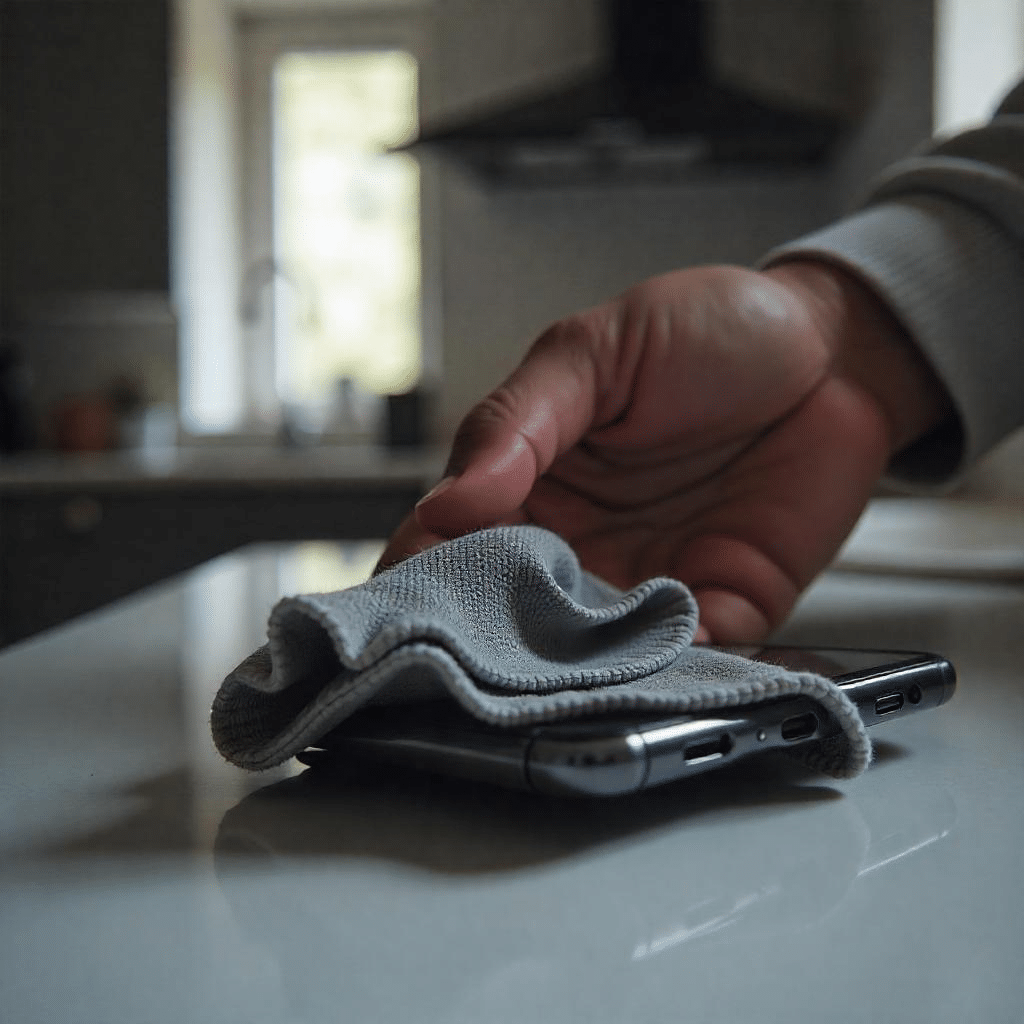Fix My Speaker Phone: Quick Solutions for Common Issues

Are you struggling with poor sound quality or distorted audio during calls on your speakerphone? If you’ve been asking, “How do I fix my speaker phone?” you’re not alone. Many people face this common issue, whether it’s on their smartphone, tablet, or even a dedicated speakerphone device. Luckily, in this blog post, we’ll explore practical solutions to fix your speakerphone problems so you can enjoy clear, crisp calls again.
Why Does My Speakerphone Sound Bad?
Before we get into how to fix your speaker phone, it’s essential to understand why your speakerphone might be malfunctioning. The issue could arise due to several factors:
Network Issues: If your internet or mobile signal is weak, your speakerphone may not work properly.
Speaker Damage: Over time, wear and tear on your phone’s speaker can result in muffled or distorted sound.
Software Glitches: Sometimes, a software update or glitch can affect how your phone’s speaker works.
Obstructions: Dust, dirt, or debris in the speaker grill can reduce sound clarity.
Now that we understand potential causes, let’s explore how to fix your speaker phone and get your audio back to its best.
1. Check Your Network Connection
A weak network connection can drastically affect the quality of your speakerphone. Whether you are using a mobile phone or a Wi-Fi-based speakerphone, poor reception leads to a distorted sound or even dropped calls. To improve your connection:
For Mobile Phones: Ensure you’re in an area with a strong mobile signal. You can also switch to Wi-Fi calling if your mobile signal is weak.
For Wi-Fi Speakerphones: Try moving closer to your Wi-Fi router or resetting your internet connection for better signal strength.
2. Clean the Speaker Grill
One of the most overlooked reasons for poor sound quality is dirt or dust buildup on your speaker. Over time, debris can clog the speaker grill, affecting the output sound. To clean it:
- Use a soft, dry cloth or a microfiber cloth to gently wipe the speaker area.
- If you notice heavy dust or dirt, use a soft brush or compressed air to clear it out.
Regular cleaning can prevent your speakerphone from sounding muffled and ensure better audio performance.

3. Restart Your Device
If you’ve been asking yourself, “How do I fix my speaker phone?” and haven’t tried restarting your device yet, it’s one of the quickest fixes. Restarting your phone or speakerphone can help resolve any minor software glitches that may be affecting your speaker.
To restart your device:
For Mobile Phones: Press and hold the power button, then select the restart option.
For Speakerphones: If it’s a Bluetooth speakerphone, power it off, wait for a few seconds, and then turn it back on.
This simple step can often solve temporary issues affecting your speakerphone’s sound quality.
4. Adjust the Volume Settings
It sounds simple, but sometimes the volume on your device is not turned up enough. Ensure your speakerphone volume is set to an appropriate level.
For Smartphones and Tablets: Check the volume settings during a call or speakerphone session. You can adjust it using the physical buttons or in the device settings.
For Dedicated Speakerphones: Many speakerphones have their own volume control. Ensure it’s set to an audible level for clear sound.
5. Update Your Software
Outdated software can cause issues with your device’s hardware, including the speakerphone. Keeping your device’s operating system updated can improve the sound quality and fix bugs that may be causing problems.
For Smartphones and Tablets: Go to the settings and check for any available updates. Install the update and restart the device.
For Speakerphones: Check the manufacturer’s website for any firmware updates. Follow the instructions for updating your device.
Updating your software can ensure your device is working optimally, which may solve many speakerphone-related problems.
6. Check for Hardware Issues
If the above methods don’t solve the issue, your speakerphone might have a hardware problem. This could be due to a malfunctioning speaker or internal wiring issue.
For Mobile Phones or Tablets: Inspect the speaker for visible damage. If the speaker is physically damaged or broken, you may need to take the device to a professional technician for repair.
For Dedicated Speakerphones: If your speakerphone is faulty, consider reaching out to the manufacturer for troubleshooting or repair options.
If the issue is hardware-related, repairs or a replacement might be necessary.
7. Switch to External Speakers
If your phone’s built-in speaker is the source of the problem, consider using external speakers to fix your speakerphone issues. Bluetooth and wired speakers are great options for boosting audio quality.
Bluetooth Speakers: Pair your mobile device with a high-quality Bluetooth speaker for better sound during calls.
Wired Speakers: If your device supports wired connections, using a plug-in speaker can provide clear, amplified audio.
Switching to external speakers can often give you the sound quality you’re missing.
8. Check for Interference from Other Devices
Interference from other electronic devices can sometimes cause issues with your speakerphone. To minimize this, try the following:
- Move your device away from other electronic gadgets that could be causing interference, such as microwaves, routers, or large electronics.
- If you’re using Bluetooth, disconnect any unnecessary Bluetooth devices that may be interfering with the signal.
Reducing interference can help improve your speakerphone’s audio clarity.
9. Adjust Audio Settings in Apps
Sometimes, the problem may lie in the audio settings of the specific app you’re using for calls. Check the app’s settings and ensure that the audio quality is optimized for speakerphone use.
For Video Calling Apps (Zoom, Skype, etc.): Go into the audio settings and select the best output option for your speakerphone.
For VoIP Apps (WhatsApp, etc.): Ensure your audio settings are configured to use the phone’s speaker rather than a connected Bluetooth device or headset.
10. Use the Right Speakerphone for the Job
When considering how to fix your speaker phone, it’s worth noting that the quality of the speakerphone itself plays a significant role. If you frequently experience poor audio quality, it may be time to invest in a higher-quality speakerphone.
Look for options that suit your needs, such as:
Portable Bluetooth Speakers: These can offer excellent sound quality for personal calls.
Dedicated Speakerphone Systems: For business use, dedicated speakerphones often come with features like noise-canceling technology, multiple microphones, and superior sound quality.
Investing in a good-quality speakerphone can save you from ongoing frustration and improve your calling experience.

Frequently Asked Questions
Does RV skirting help in winter?
Yes, RV skirting is highly effective in winter. It helps protect your RV’s underbelly by providing insulation and preventing cold air from reaching critical components like plumbing and tanks. This reduces the risk of freezing and helps maintain a stable temperature inside the RV.
How to keep RV underbelly warm in winter?
To keep your RV underbelly warm in winter, you can use RV skirting, which provides insulation and blocks cold winds. Additionally, installing heated blankets around pipes, using heat tape for water lines, and ensuring that your RV’s furnace is functioning properly can help keep the underbelly warm.
What to put around a camper for winter?
To protect your camper during winter, you can use RV skirting around the base to prevent cold air from reaching the underbelly. You can also use insulated covers for windows, apply antifreeze to plumbing, and use insulated pipe wraps to protect water lines from freezing.
What material is used for RV skirting?
RV skirting is typically made from durable materials like foam board, vinyl, or rubber. Foam board skirting is popular because it provides excellent insulation, while vinyl and rubber options are used for their flexibility and weather resistance. These materials help protect your RV from harsh winter conditions.
Can I make my own RV skirting?
Yes, DIY RV skirting is a popular option for those on a budget. You can use materials like foam board, plywood, or vinyl fabric to create your own skirting. There are plenty of online resources with step-by-step guides to help you create a custom solution for your RV.
Is foam board a good material for RV skirting?
Foam board is a great choice for RV skirting as it provides excellent insulation, keeping your RV warm in winter. It’s lightweight, easy to install, and relatively inexpensive compared to other materials. Foam board also helps in blocking out cold air and moisture from getting to the underbelly.
How do I install RV skirting for winter?
Installing RV skirting can be done in several ways depending on the materials you use. Common methods involve attaching the skirting to the bottom of the RV with adhesive, screws, or a tension rod system. For foam board, you can use screws or zip ties, while vinyl can be stapled or nailed into place.
What is the best budget option for RV skirting?
For those on a budget, DIY RV skirting using foam board or inexpensive vinyl materials is a cost-effective solution. Foam board offers great insulation at a low cost, while vinyl skirting kits are also affordable and provide good protection. Many people choose to build their own skirting to save money.
Can RV skirting prevent frozen pipes in winter?
Yes, RV skirting plays a significant role in preventing frozen pipes in winter. By insulating the underbelly and blocking cold wind, skirting helps maintain a stable temperature around your water lines, reducing the risk of freezing and costly damage to plumbing.
How long does RV skirting last?
The lifespan of RV skirting depends on the material used. Vinyl skirting typically lasts 3-5 years, while foam board can last even longer if properly maintained. Regular cleaning and checking for damage after harsh weather conditions can help extend the life of your skirting.
Conclusion
As you’ve seen, there are several ways to fix your speaker phone and get your audio back to clear, high-quality sound. Whether it’s adjusting your volume, cleaning your device, restarting it, or upgrading to an external speaker, these fixes should address the most common issues people face.
If you’ve tried everything listed here and are still asking, “How do I fix my speaker phone?” it might be time to consult a professional or consider replacing the device if it’s damaged.





